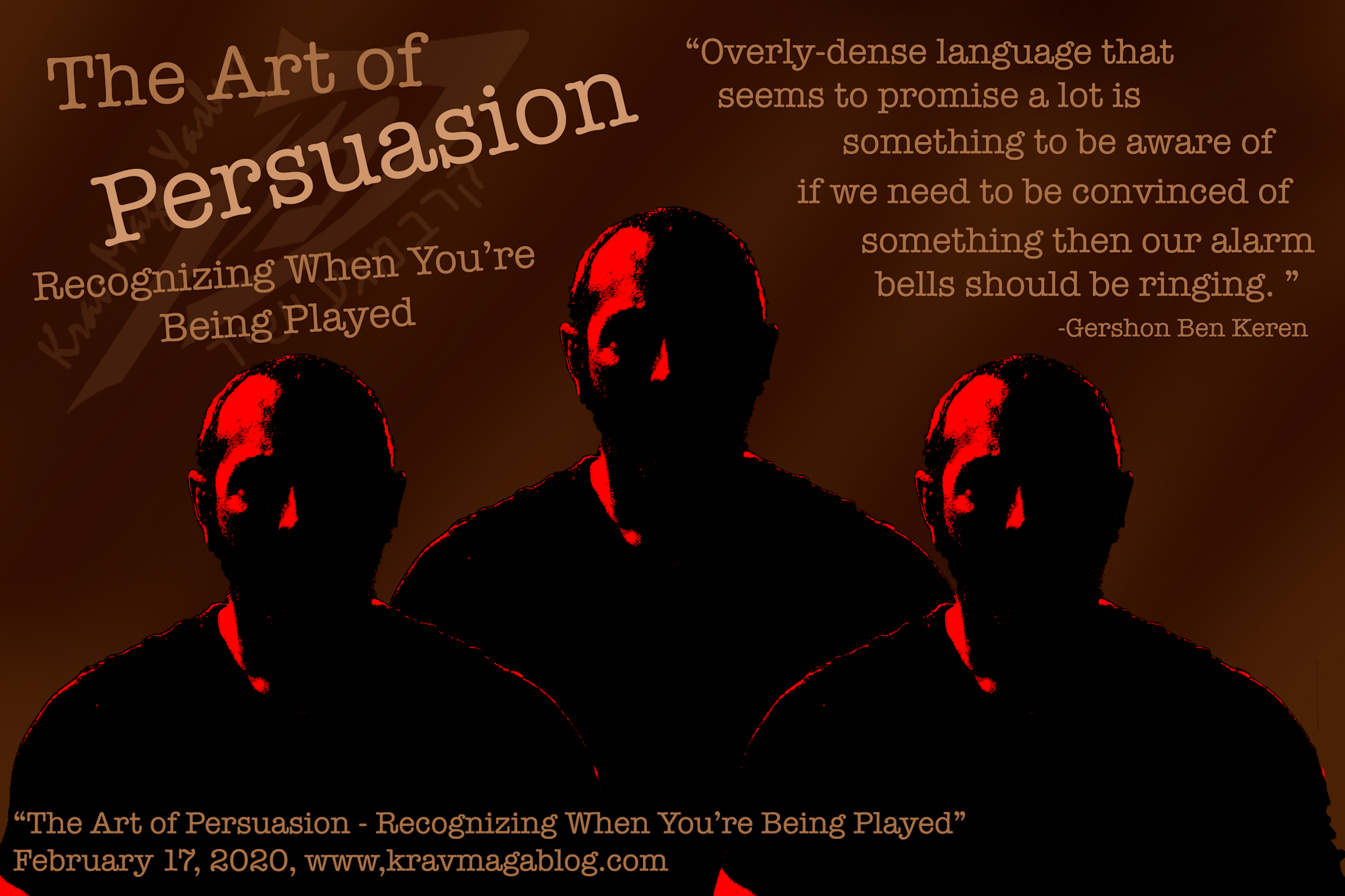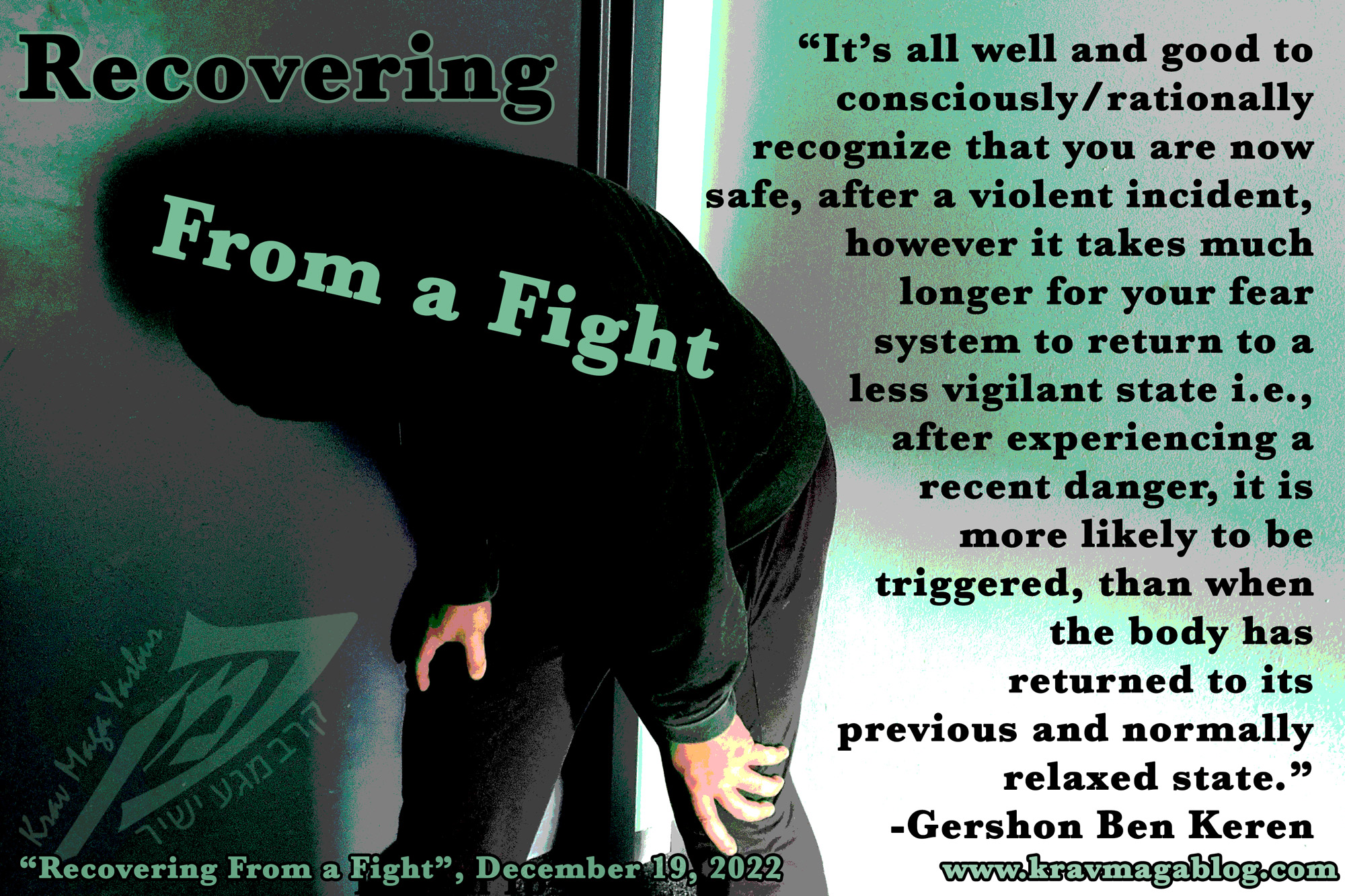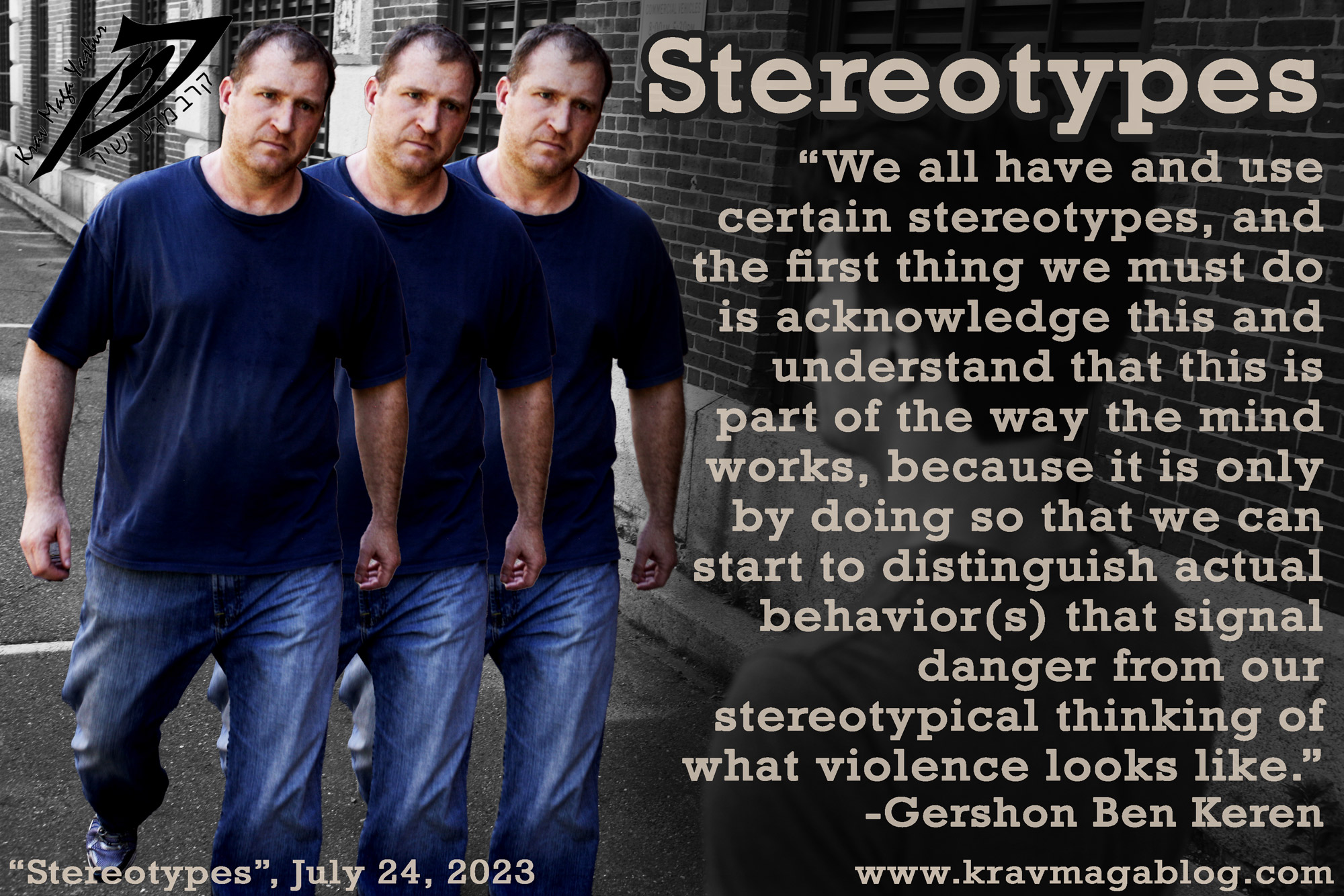Stereotypes, is an article written by Gershon Ben Keren, a 5th Degree Black Belt in Krav Maga, who teaches Krav Maga in Boston, MA. He has also authored three Amazon best-Selling Books on Krav Maga.
The term/word “stereotype” originated in the print industry. It refers to a metal plate that printers used to hold an entire page of print. This enabled them to print identical pages over and over again. The journalist, Walter Lippmann, brought the term to public attention in the 1920’s, when he used it to refer to “pictures in the head”, whereby people created fixed ideas of the attributes that all members of a group shared e.g., all Jews and Scottish people are tight/cheap with money (as a Jewish/Scottish person I obviously adhere to both stereotypes thereby giving value for money – two stereotypes for the price of one). Lippmann, generally used the term “stereotype” to refer to negative attributes e.g., if a seemingly positive attribute was presented such as that Jews were good at business, the actual messaging would be negative e.g., Jews are “good” at business because they are taking advantage and exploiting others etc. The problem with stereotypes is that they are a natural part of human thinking, and they don’t necessarily make us “bad” people. They offer us a shortcut that allows us to engage in quick decision making, which in certain instances can be useful e.g., if we see a large tattooed biker, sporting Hell’s Angels patches, walking decisively towards us, there may be a chance that he’s looking to have an intellectual discussion with us about the works of Voltaire, however it may be safer to assume that the large array of steak knives he’s carrying don’t indicate that he’s on his way to a cooking convention etc. The stereotype of Hell’s Angels having a propensity for violence, may mean that we at times interpret things in an unfair manner but as a heuristic means that we can make decisions quickly, and this is why our minds create stereotypes in the first place. However, the danger to our personal safety (and to others) comes when we create stereotypes, or folk devils, that have no basis in reality. These can divert our attention away from actual danger and direct our focus/attention onto those who actually present no threat/danger towards us. We all have and use certain stereotypes, and the first thing we must do is acknowledge this and understand that this is part of the way the mind works, because it is only by doing so that we can start to distinguish actual behavior(s) that signal danger from our stereotypical thinking of what violence looks like.
In the UK, in July of 2000, a tabloid paper (the News of the World) named 82 convicted child sex offenders and promised to name and produce photographs of over 100 000 more. In August it abandoned its campaign, due to inciting violence against innocent people e.g., people who might have shared the same name as those listed, and lived in a similar neighborhood etc. It also resulted in vigilante groups targeting individuals who adhered to the “stereotype” of a child molester e.g., single older men who generally kept themselves to themselves etc. The truth is, and this may have been known by some of those targeting these individuals (who may have themselves engaged in child sexual abuse), is that most child sex offenses aren’t committed by strangers but by people the child knows e.g., family members, friends of the family and people trusted by the family, such as teachers, religious leaders, and sports coaches etc. This is one of the reasons I don’t engage in specific “stranger danger” programs when I teach children and teenagers self-defense, but rather teach more generalized personal safety that can be applied to all people and situations etc. I have lost count of the number of ridiculous scenario-based training videos where an instructor plays the role of someone attempting to abduct a child, adhering to the stereotype of a “creepy” old man who is trying to lure a child away with a bag of sweets etc. Whilst child abductions by strangers may play on a parent’s greatest fears, they are statistically extremely rare occurrences and when they do occur the methods used are usually more subtle than a bag of sweets and a snatch and grab e.g. someone may see a child with their name printed on their school bag and approach them by name, stating that they are a friend of the family who has been sent to get them because a parent or other family member is in hospital etc. Such a story is much more likely to motivate a child to accompany them than the “reward” of a sweet etc. By presenting to children a “stereotypical” danger we are at risk of blinding them to the more realistic and likely ones.
Another group that gets “stereotyped” as being predisposed to violence are the mentally ill, especially those who are schizophrenic. Schizophrenia is an extremely complex mental illness, and there are in fact those people who overcome it e.g., they are plagued by it in their teenage years but recover from it through treatment etc. These occurrences rarely get reported or make the news because they are uneventful. Unless someone has a firsthand experience of knowing an individual who went through this it is unlikely that they would be aware of such a thing happening. Most individuals with schizophrenia “manage” their illness without ever engaging in violent or threatening behaviors and in all likelihood someone with schizophrenia who has violent/paranoid/threatened ideations will probably target those they know, rather than strangers. However, holding on to a stereotype such as that the most dangerous people that exist are those with schizophrenia allows us to live in a state of denial concerning the actual and real risk(s) of violence. Having a “Folk Devil”/stereotype to fear is one way of managing our actual fears.
Stereotypes are natural and useful for making quick decisions, however quick decisions that are wrong are both unhelpful and dangerous, and so there are times when we should question why we have reached the decisions we have. When I’m facing what I believe is a threat – that is when I have the luxury of time to do so – I will often take a moment to examine if what I’m experiencing is actually “fear” or if I’ve “created” the fear. There are monsters out there but not every shadow I see is from one of them, and jumping at them potentially takes my attention away from those that actually cast them.
0 COMMENTS















